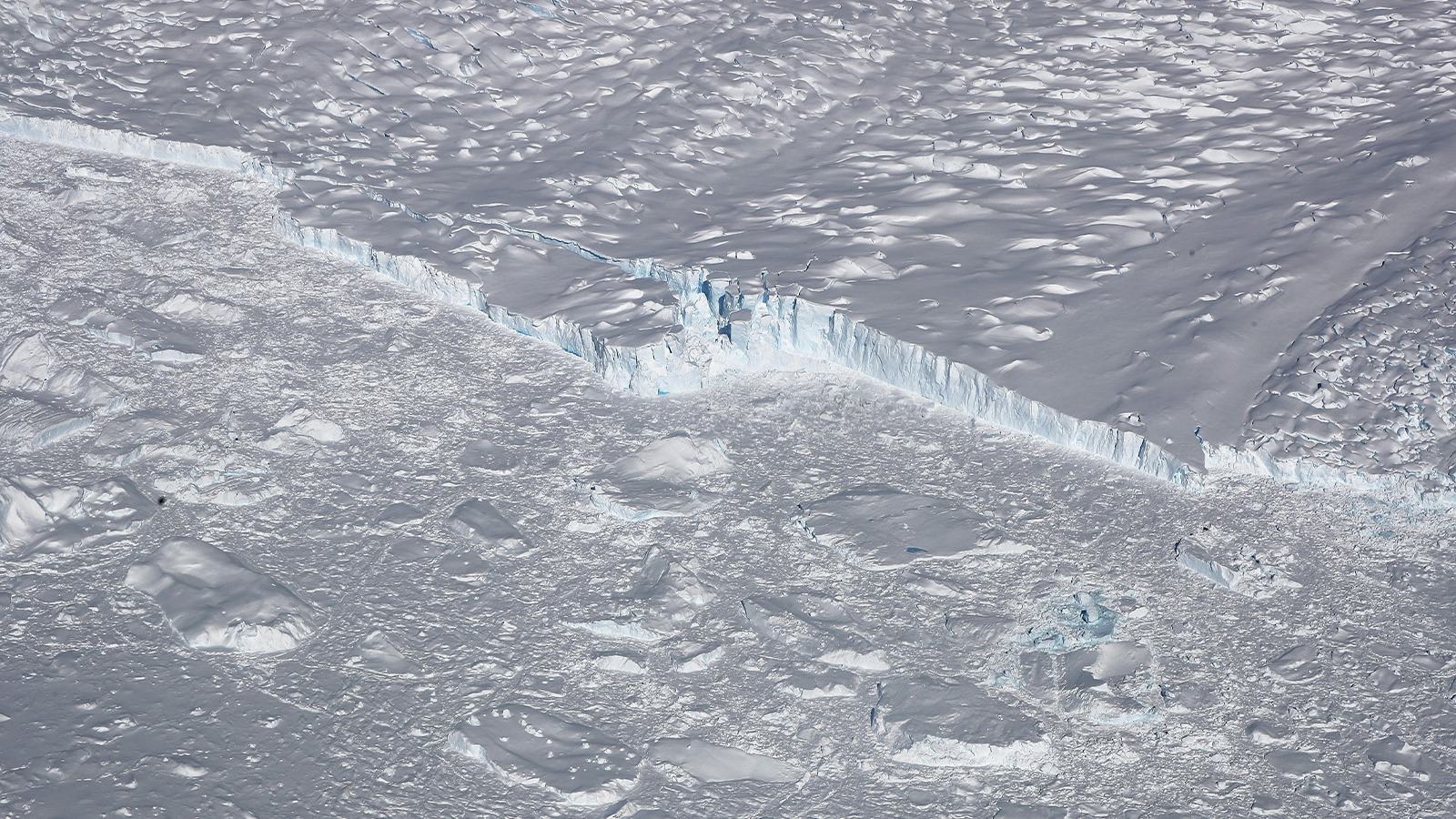At the bottom of the Earth sits a massive bowl of ice you may know as the West Antarctic ice sheet. Each day, the ocean laps away at its base, slowly eroding the glaciers that line its rim. When they inevitably give in, the sea will begin to fill the basin, claiming the ice for its own and flooding coastlines around the world.
Thwaites Glacier is one of the bulwarks guarding against the collapse of this critical ice sheet, most of which rests below sea level and holds enough ice to raise the ocean by 60 meters. Unfortunately, this frosty goliath, the size of Florida, is also one of the world’s most unstable and fastest melting glaciers. While glaciologists knew its rate of ice loss was dire, they recently discovered that it’s exposed to far more warming water than previously believed. In a study published this week , scientists using satellite imagery and hydraulic modeling found that warming tidal currents are permeating the massive block of ice at depths as great as 3.7 miles, causing “vigorous melting”.
“We really, really need to understand how fast the ice is changing,” said Christine Dow, an associate professor of glaciology at the University of Waterloo and one of the study’s authors. “We were hoping it would take a hundred, 500 years to lose that ice.” Although the researchers do not know how much faster the ice is melting, they worry it could be gone within a few decades.
As climate change drives global temperatures ever higher, glaciers and ice sheets in polar and mountainous regions inevitably melt. The water and dislodged ice flows into the oceans, causing them to rise. Since 1880, global sea levels have climbed roughly 9 inches, and any sudden increase could be catastrophic for coastal cities like New York, Mumbai, and Shanghai. Low-lying countries like the Marshall Islands and Tuvalu could be submerged entirely.
Thwaites Glacier, often dubbed the “Doomsday glacier,” already accounts for 4 percent of the planet’s sea level rise and loses 50 billion tons of ice annually. When it collapses, it could raise oceans worldwide by 65 centimeters, or just over 2 feet. “It doesn’t sound like a lot, but if you think of how much ocean water we have in the world, that’s a huge volume,” said Dow.
The study, published in Proceedings of the National Academy of Sciences, found that the pulsing of tides, which raise and lower the ice, allow water to creep further under its shelf and weaken its anchor to the seabed. While the same team observed this phenomenon at Petermann Glacier in Greenland, it had not been recorded in Antarctica. Thwaites has about eight times the amount of ice in contact with the ocean as Petermann.
Using high-resolution satellite images and hydrological data, the study identified high-pressure pockets where the glacier’s surface had been raised, which showed that warm water was flowing under the ice. Previous models had only used the part of the glacier that touches the ocean as the “grounding line” from which to start calculating the potential speed of ice loss from contact with warm, salty water. Now, the paper says it may have found the missing link in modeling how glaciers change.
“This boundary is a really crucial aspect in geology with respect to the glaciers’ response to a changing climate,” said Bernd Scheuchl, an earth systems researcher at the University of California-Irvine and coauthor of the paper. He says a better understanding of the way ocean water can penetrate the base of a glacier can help scientists better predict ice loss across the West Antarctic ice sheet. “The entire region is the gateway to an area that’s well below sea level.”
Predicting the speed of ice loss and sea level rise is no easy task. Ever-shifting factors, like the amount of greenhouse gas emissions, could slow or accelerate global warming, and in turn, the rate that glaciers melt. And modeling glaciers, which are hydrologically dynamic, remote, and difficult to research, is a technological challenge that computers have only recently been able to handle, according to Dow.
Sharon Gray, a marine scientist at the nonprofit Rising Seas Institute, says research breakthroughs like this help the world prepare for and adapt to disappearing coastlines. “It’s never going to be perfect,” she said. “But obviously, the better we can get our models, the better we get our projections that help us plan.”
Given the complexity and uncertainty of modeling, Gray said it’s best to assume seas will rise to the highest predicted level and prepare for worst-case scenarios. Some high-risk places, like Singapore and the Netherlands, are doing just that and have been investing in infrastructure to meet the challenge. “I think there’s hope and an opportunity in really thinking creatively and trying to wrap our heads around what’s coming and what we can do about it,” she said.
Researchers like Dow and Scheuchl say the best way to protect glaciers is to limit carbon emissions. Although the heat that humanity has already put into the atmosphere will linger for centuries and continue to melt glaciers, curbing the amount the planet warms could buy time to prepare for, if not prevent, the most extreme outcomes.
“It’s never too late to make some change,” says Scheuchl. “Even if we aren’t able to stop these developments, we can slow things down and lessen their impacts.”

